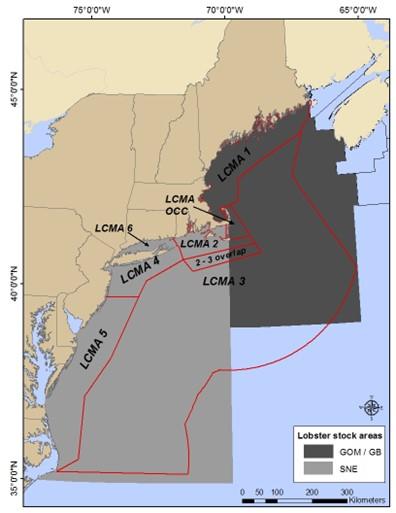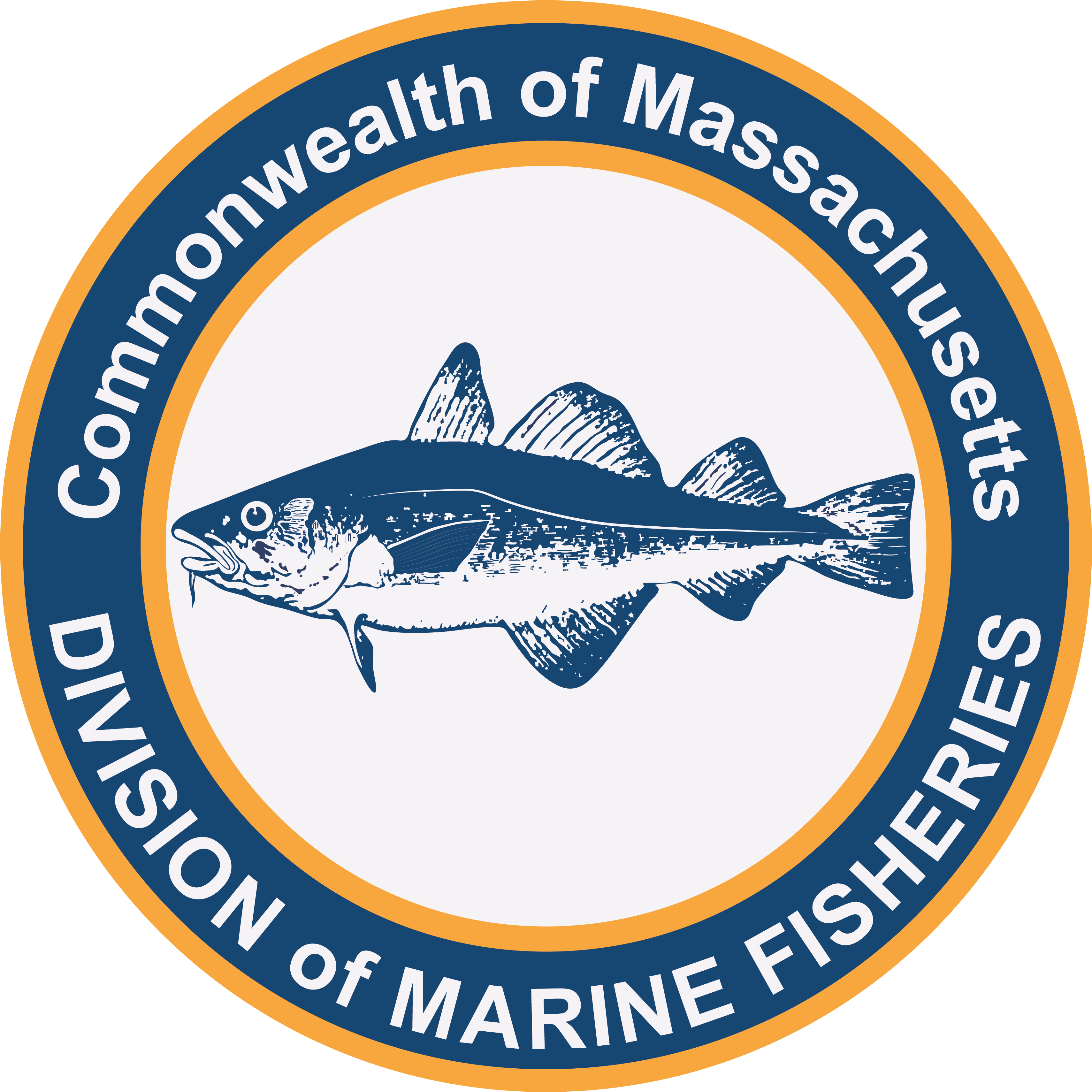- Division of Marine Fisheries

The abundance of American lobster off Massachusetts, New Hampshire, and Maine is still very high and the industry’s annual catches are twice what they were two decades ago, but there are signs that declines from the record highs are inevitable. The landings from this Gulf of Maine & Georges Bank stock have seen slight declines from historic highs around 2016 when landings reached about 160 million lbs. Catches in the past 6 years since the historic high have declined slowly to approximately 132 million lbs. in 2021.
State and federal scientists are confident that the decline in catches is tied to fewer young lobsters surviving in recent years. Surveys conducted by the states’ lobster scientists using SCUBA to count young-of-the-year lobsters settling in the nearshore areas have seen some decline over the past decade. And as expected, after a 4-5 year lag we have detected declines in the larger (but still undersized) lobsters collected in the “ventless trap” surveys. DMF and other states conduct these surveys cooperatively with contracted commercial lobster vessels working with biologists aboard to set and haul standardized baited survey traps - without the usual escape vents - to track the abundance of lobsters as they age into catchable size.
The cause of the decline in annual production of young lobster appears to be related to ocean warming and shifts in ocean currents that might be affecting food for larval lobsters, not overfishing. Oceanographers have detected alterations in the flows of cold water currents from the north resulting in overall warming water temperatures in the Gulf of Maine. Along with this warming, abundance of some copepod species that larval lobsters eat have declined. These changes appear to be closely related to the declines in young lobsters settling to the bottom. The stocks are not expected to experience the dramatic steep decline seen in southern New England waters because the Gulf of Maine has sufficient deeper water habitats to accommodate the temperature needs of the lobster. However, the changing environmental conditions make it harder to predict how the lobster population will respond.
The Atlantic States Marine Fisheries Commission has been closely monitoring the recent decline and took the extraordinary measure this year to enact a management plan that will trigger rule changes in the near future if the stock continues to decline. The Technical Committee devised an index of abundance by blending data from two fishery independent sources: state trawl surveys and the ventless trap surveys. To date, the index appears to have declined by about 28%. If and when the decline reaches 35%, rules will be automatically enacted by states to bolster the amount of spawning lobsters by raising the minimum legal carapace size in two steps over a 3-year period from 3 ¼” to 3 3/8”. The hope is that increased egg production will compensate for the reduced survival of larval lobsters.
This will be the first increase in minimum legal size for lobsters in the Gulf of Maine in over 30 years. While the increase seems minor, it may increase the total egg production of this stock by up to 40%! In addition there will be a modest decrease in the maximum size allowed for lobsters harvested from offshore waters from 6 ¾” to 6 ½” on a separate schedule.
A second significant action taken by the Commission was a set of rule changes that will go into effect next year designed to provide a more consistent and enforceable conservation strategy across and within management areas.
The number of trap tags issued annually for vessels in Area 3 and Area 1 will be limited to the actual trap limit, and the extra 10% currently allowed will be eliminated. The state of Maine was already limiting trap tag issuance to the trap limit for Maine-based vessels.
A standard “v-notch” possession definition for female lobsters in Area 3 and Outer Cape Cod was enacted: 1/8” indentation with or without setal hairs in the designated tail flipper . Most lobstermen in the Gulf of Maine are required to carve a v-shaped notch into a specific tail flipper of egg-bearing female lobsters, to mark her as a “breeder.” This mark protects the female from future harvest. This 1/8” v-notch definition will protect reproductive females (that were notched and released by another fisher) through two molts (in most cases), and will further contribute to the egg production of the stock.
All lobster fishers in the Outer Cape Cod region will now be required to abide by the 6 ¾” maximum size that other fishers in the federal waters off Outer Cape Cod, as well as those vessels fishing far offshore (Area 3), have been required to abide by for the past decade. These simplified and more consistent rules will enhance conservation by increasing compliance and making enforcement easier – all contributing to improvements in the long-term health of the stock.
The Commission’s approach to establish “triggers” for prescribed conservation was both creative and proactive because it will prevent further delays in the rulemaking process. Addendums can take up to 2 years to develop and enact but under this approach, the changes will be enacted in a matter of months in response to changes in the stock.
DMF will undergo rulemaking this fall to implement some of these rule changes in time for the 2024 fishing year, and will be ready to enact the most substantial changes, specifically the gauge size changes, if the fishery-independent surveys detect further declines and the trigger is reached.
By Dan McKiernan, Director
